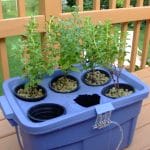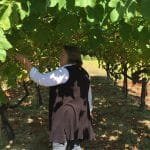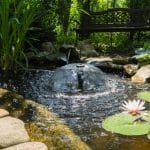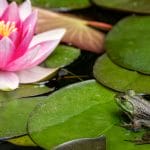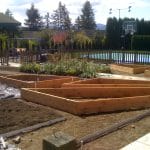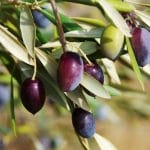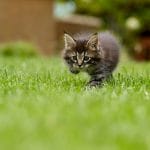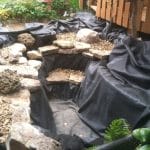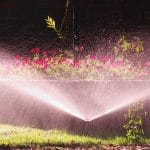Best Trees and Shrubs by Zone: Plants That Earn Their Keep in the Garden
Growing Seasons & Zones Trees & Shrubs
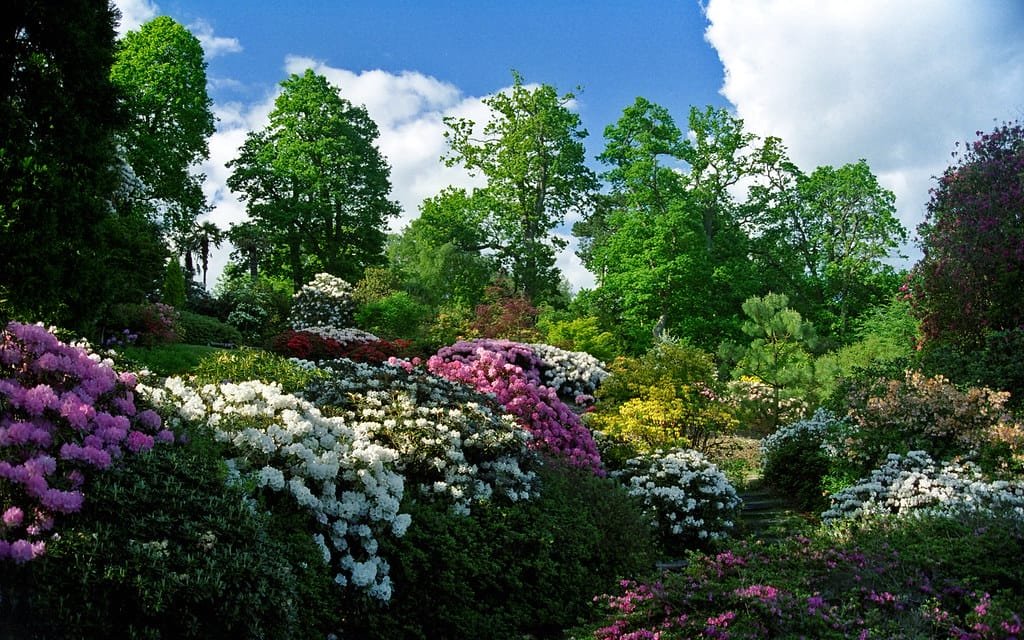
Real Picks by Zone, Not Just Pretty Faces at the Nursery
Some plants are just there for the ride. You plant them, they look nice for a year or two, and then… not much else. Maybe they get too big too fast, or drop leaves all over your neighbor’s driveway, or quietly shrivel and fade without explanation.
Then there are the plants that earn their spot. The ones that give back—shade, blooms, structure, privacy, habitat—and don’t ask for pampering every weekend. They’re the kinds of trees and shrubs I’ve come to appreciate after more than a few backyard mistakes.
So if you’re looking for trees and shrubs that actually thrive in real gardens (especially city or suburban yards), this guide breaks it down by USDA zone. These are plants you’ll see in cities all over the U.S.—and for good reason. They’re tough, beautiful, and practical.
Let’s dig in.
Zone 3–4: Cold Winters, Short Summers, Tough Plants Only
Think Northern Minnesota, parts of Montana, the Dakotas—winters that bite and summers that flash by.
1. Serviceberry (Amelanchier spp.)
Why it earns its keep: Early spring flowers, edible berries, blazing fall color. It fits into small yards and supports pollinators and birds.
Where I’d plant it: Along a fence or tucked near a vegetable bed—it doesn’t overshadow but still gives structure.
2. Eastern Redbud (Cercis canadensis)
Why it works: One of the earliest trees to bloom, even when there’s still frost on the ground. Heart-shaped leaves and pinkish flowers add charm without fuss.
Tip: Needs some wind protection up north—plant it in a nook.
3. Lilac (Syringa vulgaris)
Okay, so lilacs don’t do a lot most of the year—but those blooms in spring? Worth it. That scent is like memory fuel.
They’re hardy, drought-tolerant once established, and make a lovely informal hedge.
4. Techny Arborvitae (Thuja occidentalis ‘Techny’)
If you’re after evergreen privacy that won’t brown out in brutal winters, this is your shrub. Slower growing than some, but more reliable in the long run.
Good for: Borders, windbreaks, or tucking into corners to soften the space.
Zone 5–6: Classic Seasons, Versatile Choices
This includes much of the Midwest, Northeast, and inland Northwest—areas with real seasons and decent rainfall.
1. Red Maple (Acer rubrum)
Seen lining streets in city after city for a reason. Fast-growing, colorful in fall, and relatively low-maintenance.
Pro tip: Choose a local cultivar to avoid messy surface roots and leaf scorch in dry years.
2. Ninebark (Physocarpus opulifolius)
This native shrub is practically bulletproof. It blooms, has colorful foliage, and provides winter interest with peeling bark.
Best part? It doesn’t mind clay soil, urban heat, or occasional drought.
3. Viburnum (Viburnum dentatum, V. trilobum)
Whether you want berries, blooms, or bird habitat, there’s a viburnum for it. My ‘Blue Muffin’ gets heavy with berries in late summer and draws all kinds of birds.
Works well in: Foundation plantings or along privacy fences.
4. Hackberry (Celtis occidentalis)
A humble, overlooked native tree that handles tough urban conditions—wind, salt, poor soil. Think of it as the “dad jeans” of trees: not flashy, but dependable.
Zone 7–8: Long Summers, Hot Days, and Gardeners Who Need Reliable Plants
This includes big swaths of the South, Mid-Atlantic, and parts of the West—think Raleigh, Dallas, Sacramento.
1. Crape Myrtle (Lagerstroemia indica)
Let’s just say it—crape myrtles have done more for southern neighborhoods than any HOA could.
Months of blooms, smooth bark, drought tolerance, and low litter (if you choose right).
Just don’t commit “crape murder” with aggressive topping. Let them grow naturally, and they’re stunning.
2. American Holly (Ilex opaca)
Need year-round privacy and some wildlife support? This evergreen is beautiful, classic, and tough.
The berries feed the birds in winter, and the dense foliage makes a great screen.
3. Southern Magnolia (Magnolia grandiflora)
Big leaves, bigger blooms, and even bigger presence. A little messy, yes—but once you’ve smelled that lemony flower, you’ll forgive a few leathery leaves.
Good for: Corner anchor plantings, front yard statement trees.
4. Wax Myrtle (Morella cerifera)
Light, fragrant leaves and a fast growth rate. Perfect for informal hedges or privacy screens in warm, humid regions.
I planted mine along a back fence to block the view of a neighbor’s trampoline. Worked like a charm.
Zone 9–11: Heat, Sun, and Sometimes No Rain for Weeks
Southern California, Florida, the Gulf Coast, and the desert Southwest all fall into this zone territory. You need plants that can take heat and bounce back.
1. Desert Willow (Chilopsis linearis)
If you want a tree that blooms like crazy, takes no water, and doesn’t get too big—this is it. Hummingbirds love the trumpet-shaped flowers.
Bonus: It’s drought-tolerant and doesn’t need much pruning.
2. Bottlebrush (Callistemon spp.)
Ever seen those fuzzy red blooms that look like pipe cleaners? That’s bottlebrush. It thrives in hot climates and attracts pollinators by the dozen.
3. Oleander (Nerium oleander)
Controversial for being toxic—but it’s everywhere in southern cities for a reason. It handles poor soil, salt spray, wind, and extreme heat.
Great for: Median strips, road borders, and large-scale privacy hedges.
4. Japanese Blueberry (Elaeocarpus decipiens)
Not an edible blueberry, but a gorgeous evergreen tree that gives vertical interest and rich green color all year.
Often used as a screen or small shade tree in urban landscapes.
Shrubs and Trees That Thrive Anywhere (If You Pick the Right Spot)
These next few plants are generalists—you’ll find them from Seattle to Atlanta to Denver. Pick the right cultivar, match it to your zone, and they’ll put in the work.
1. Boxwood (Buxus spp.)
The unsung hero of structured landscapes. They make great low hedges, borders, or green accents in more naturalistic plantings.
If you’re organic like me, look for blight-resistant varieties and mulch well.
2. Juniper (Juniperus spp.)
Tons of options here—from low groundcovers to upright privacy shrubs. They’re drought-tolerant, evergreen, and often deer-resistant.
Bonus: Juniper berries feed wildlife (and maybe even your homemade gin experiments?).
3. Hydrangea (Hydrangea arborescens, H. paniculata, H. quercifolia)
They’re not just pretty faces. Some types (like oakleaf hydrangea) provide multi-season interest with strong stems, fall color, and exfoliating bark.
Best for: Morning sun, afternoon shade, and compost-rich soil.
Why These Plants Keep Showing Up in City Landscapes
There’s a reason you see the same trees and shrubs over and over in public plantings and neighborhood yards. It’s not just availability—it’s performance. These plants have proven they can handle:
- Soil compaction from construction
- Urban heat islands
- Drought and dry spells
- Salt or wind exposure
- Limited root space
And they often support wildlife, need little pruning, and still look good in January.
As gardeners—especially those of us growing in smaller lots, patios, or front yards—these qualities matter. I want plants that work with me, not ones that demand constant attention like a high-strung houseguest.
Final Thoughts from My Shady Side Yard
Over the years, I’ve come to love trees and shrubs not just for how they look—but for how they function. They anchor a space. They invite birds. They cast shade over hot flagstone. They give shape to the whole garden.
I’ve planted trees that turned into disasters. I’ve also planted shrubs that quietly became the backbone of the whole yard. Some needed to be ripped out. Some surprised me by thriving in places I thought were too dry or too cramped.
The difference? Choosing plants that make sense for your zone, your space, and your goals.
So whether you need a screen for privacy, a magnet for pollinators, or just a tree that won’t wimp out in a heatwave—start with something from this list. These are the plants that show up for real gardeners in real spaces. Not just glossy labels at the garden center.
And if you’re still not sure what’ll thrive in your zip code? Take a walk. Look around your neighborhood. Ask a neighbor what that blooming tree is in their parkway strip. Chances are, it’s there because it’s tough, beautiful, and absolutely earning its keep.
Share this post
Table of Contents
- Real Picks by Zone, Not Just Pretty Faces at the Nursery
- Zone 3–4: Cold Winters, Short Summers, Tough Plants Only
- 1. Serviceberry (Amelanchier spp.)
- 2. Eastern Redbud (Cercis canadensis)
- 3. Lilac (Syringa vulgaris)
- 4. Techny Arborvitae (Thuja occidentalis ‘Techny’)
- Zone 5–6: Classic Seasons, Versatile Choices
- 1. Red Maple (Acer rubrum)
- 2. Ninebark (Physocarpus opulifolius)
- 3. Viburnum (Viburnum dentatum, V. trilobum)
- 4. Hackberry (Celtis occidentalis)
- Zone 7–8: Long Summers, Hot Days, and Gardeners Who Need Reliable Plants
- 1. Crape Myrtle (Lagerstroemia indica)
- 2. American Holly (Ilex opaca)
- 3. Southern Magnolia (Magnolia grandiflora)
- 4. Wax Myrtle (Morella cerifera)
- Zone 9–11: Heat, Sun, and Sometimes No Rain for Weeks
- 1. Desert Willow (Chilopsis linearis)
- 2. Bottlebrush (Callistemon spp.)
- 3. Oleander (Nerium oleander)
- 4. Japanese Blueberry (Elaeocarpus decipiens)
- Shrubs and Trees That Thrive Anywhere (If You Pick the Right Spot)
- 1. Boxwood (Buxus spp.)
- 2. Juniper (Juniperus spp.)
- 3. Hydrangea (Hydrangea arborescens, H. paniculata, H. quercifolia)
- Why These Plants Keep Showing Up in City Landscapes
- Final Thoughts from My Shady Side Yard
All categories
More From The Garden
Disclosure: This post may contain affiliate links. That means if you click and buy, The Bright Garden may earn a small commission, at no extra cost to you. We only recommend products we’ve vetted and believe will benefit our readers.

